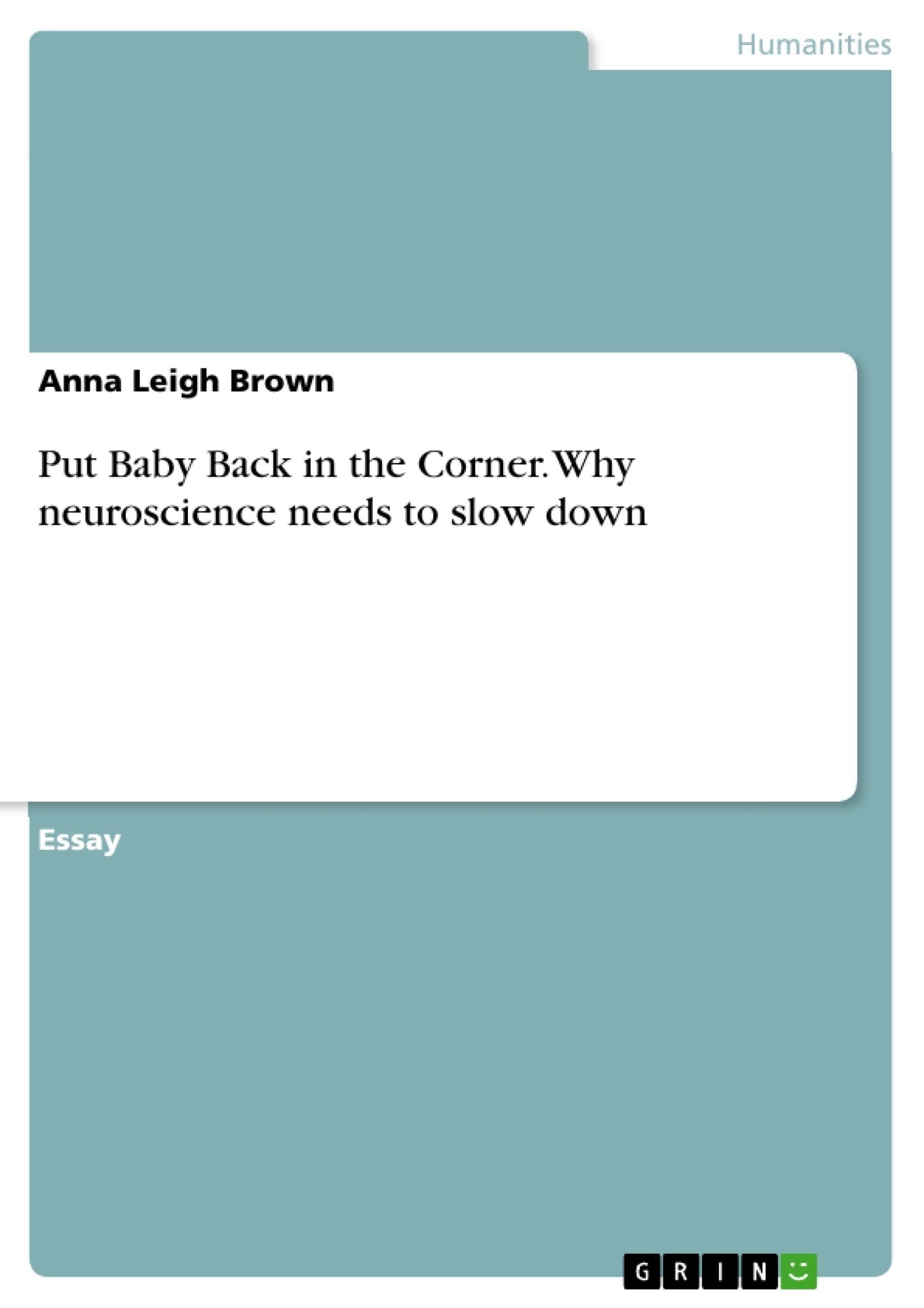1990-2000 was declared by the US Congress to be the ‘Decade of the Brain’. With projects like the Human Brain Project and the American answer of the BRAIN Initiative recently in the news for the millions they received in funding, it appears evident that neuroscience has captured public attention. But those working within the field have begun to notice an alarming new trend. Every other day it appears that there is a new flavor of neuroscience. There is Neuroethology, Neurolinguistics, Paleoneurology, Cultural Neuroscience, Neuroeconomics, and the list goes on. Neuroscience is becoming full of these specialized niches of inquiry. The logic behind these specialties is that since everything comes from the brain, everything can be reduced to a neuroscientific argument eventually. In general, too much specification within in science can be bad. Scientists have the tendency to create categories in the world and put certain phenomena into boxes that are realms of study. Thus, there is chemistry, which is distinct from biology, which is distinct from psychology. It is easy to see that in reality there are no clear lines of what makes a problem a chemical, biological or psychological one and that to truly understand a problem it must be viewed from all levels. However, this fact is easily forgotten and scientists often find themselves trapped looking at a problem only through their personal science’s paradigm. This categorization can lead to scientists forgetting the context of a problem which can actually influence and determine the nature of an issue all together (Barrett, Mesquita, & Smith, 2010). But this tendency to essentialism is not the main issue why the number of neurosciences should be constrained. It is impossible to say how many are needed exactly, but at present the number is far too high. Neuroscience is a new science that few people truly understand which makes it easy to abuse and it does not have the tools or ability yet to branch out too far beyond the individual brain.
Inhaltsverzeichnis (Table of Contents)
- Why Neuroscience Needs to be Held Back
- Neuroscience: A Young Science
- The Pseudoscience of Neuroscience
- NLP as an Example of Pseudoscience
- Neuro-Linguistics in the Real World
- The Power of the “Neuro” Name
- Low Statistical Power in Neuroscience
- Neuroscience and Public Policy
- Neuroscience and Law
- The Need for Caution
Zielsetzung und Themenschwerpunkte (Objectives and Key Themes)
This article argues that neuroscience is a young and developing field that is not yet mature enough to be applied broadly to complex social and political issues. The author warns against the overuse of the term “neuro” and the potential for pseudoscience to capitalize on the public's fascination with neuroscience. The article also explores the limitations of current neuroscience methods and the need for caution when interpreting neuroscience findings.
- The misuse of the term "neuro" to gain unwarranted credibility
- The limitations of current neuroscience research methods
- The potential for neuroscience to be used to justify social and political policies
- The need for caution and critical thinking when interpreting neuroscience findings
Zusammenfassung der Kapitel (Chapter Summaries)
The first chapter explores the rapid growth of specialized subfields within neuroscience, arguing that this trend can lead to a narrow and reductionist view of complex phenomena. The author argues that neuroscience is a relatively new field with limited tools and understanding, and that it is not yet ready to tackle complex issues like culture or social policy.
The second chapter focuses on the issue of pseudoscience, highlighting the tendency to use the “neuro” prefix to add credibility to claims that lack scientific evidence. The author uses neuro-linguistic programming (NLP) as an example, demonstrating how this practice benefits from the association with the legitimate field of neurolinguistics.
The third chapter discusses the low statistical power of many neuroscience studies, arguing that this limitation casts doubt on the ability of neuroscience to confidently explain complex phenomena like love, creativity, or consumer behavior.
The fourth chapter explores the potential impact of neuroscience on public policy and lawmaking, highlighting the dangers of using neuroscience findings to justify social and political agendas.
The final chapter reiterates the author's call for caution and restraint in applying neuroscience to complex social and political issues. The article concludes by emphasizing the need for critical thinking and a nuanced understanding of the limitations of current neuroscience research.
Schlüsselwörter (Keywords)
The primary focus of this article is on the responsible use of neuroscience and the potential for misuse. Key terms include pseudoscience, neuro-linguistic programming (NLP), statistical power, public policy, lawmaking, and critical thinking. The article also explores the limitations of current neuroscience research and the need for caution when interpreting findings in complex social and political contexts.
- Quote paper
- Anna Leigh Brown (Author), 2013, Put Baby Back in the Corner. Why neuroscience needs to slow down, Munich, GRIN Verlag, https://www.grin.com/document/231808



